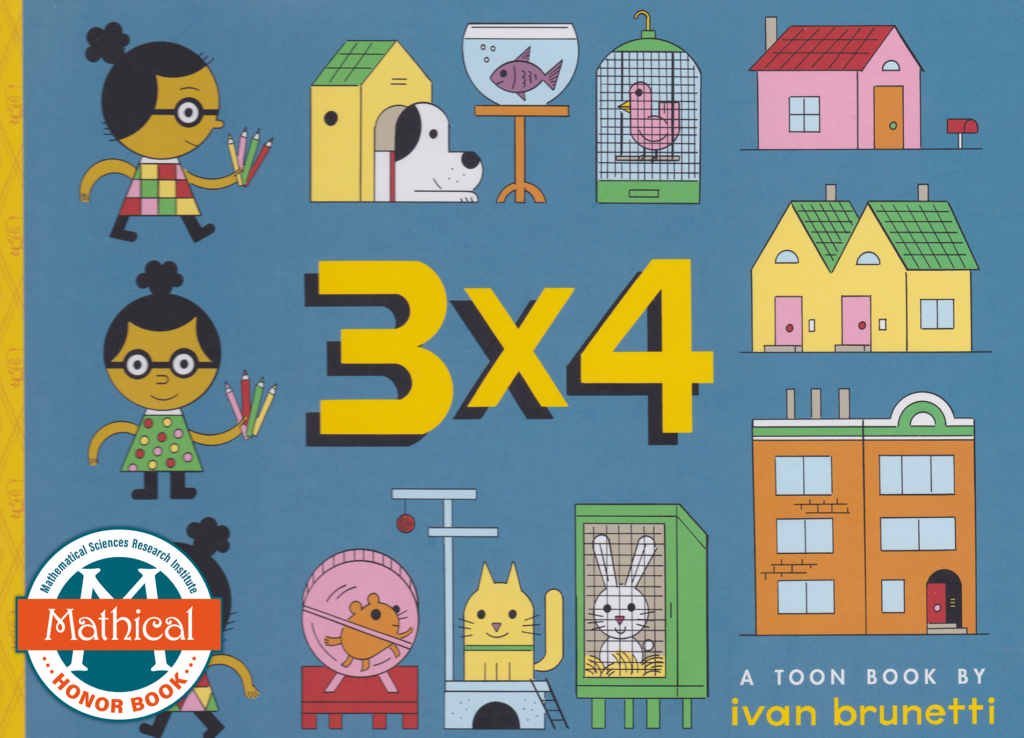¡También se puede aprender matemáticas a la hora del cuento! Intente crear sus propias preguntas.
Activity Summary
Use this storybook guide with the book “Three Times Four.” Many public libraries have this book. This is a Mathical Award honor book.
Reading guide
About the Story
In this cartoon strip book, the teacher gives his class of young students an apparently simple challenge, namely, to draw 12 things. What should the children draw? All the teacher says is, “It’s up to you.” The children mostly focus on drawing 3 things, 4 times each, like 3 balls, 3 bats, 3 gloves, and 3 hats. But that’s not all they draw. The children have the freedom to explore and experiment with different arrangements of 12 and learn about multiplication. Wait until you see Annmarie’s masterpiece at the end!

Words to Learn
sets (groups), circles, squares, triangles, front view, side view, back view
About the Math
As the children in the book make their drawings, your child can learn that:
- They can portray the number 12 in many different ways, from one group of 12 objects to 3 groups each with 4 objects.
- The objects can be of any different type, from musical instruments to shapes.
- The written expression 3 x 4 can refer to some of the pictures in the book.

Math Talk During Reading
- TALK ABOUT DIFFERENT WAYS TO MAKE 12
Joe can’t decide whether to draw 3 things 4 times each or 4 things 3 times each to show 12. Does it make any difference? Why not? - TALK ABOUT DIFFERENT ARRANGEMENTS
Julie drew 2 rows, each with 6 roses; Sal drew 3 rows, each with 4 donuts. How are the roses and the donuts the same and different? (The rows are of different lengths and numbers, but the total is 12 in both.)
Try to come up with some of your own questions and comments, too!
Activity After Reading
Help your child make drawings of all the different ways that 12 objects can be arranged evenly, like 2 rows each with 6 eggs, or 6 rows each with 2 eggs. The arrays include 4 x 3, 3 x 4, 1 x 12, and 12 x 1. Discuss how they are the same and different.
